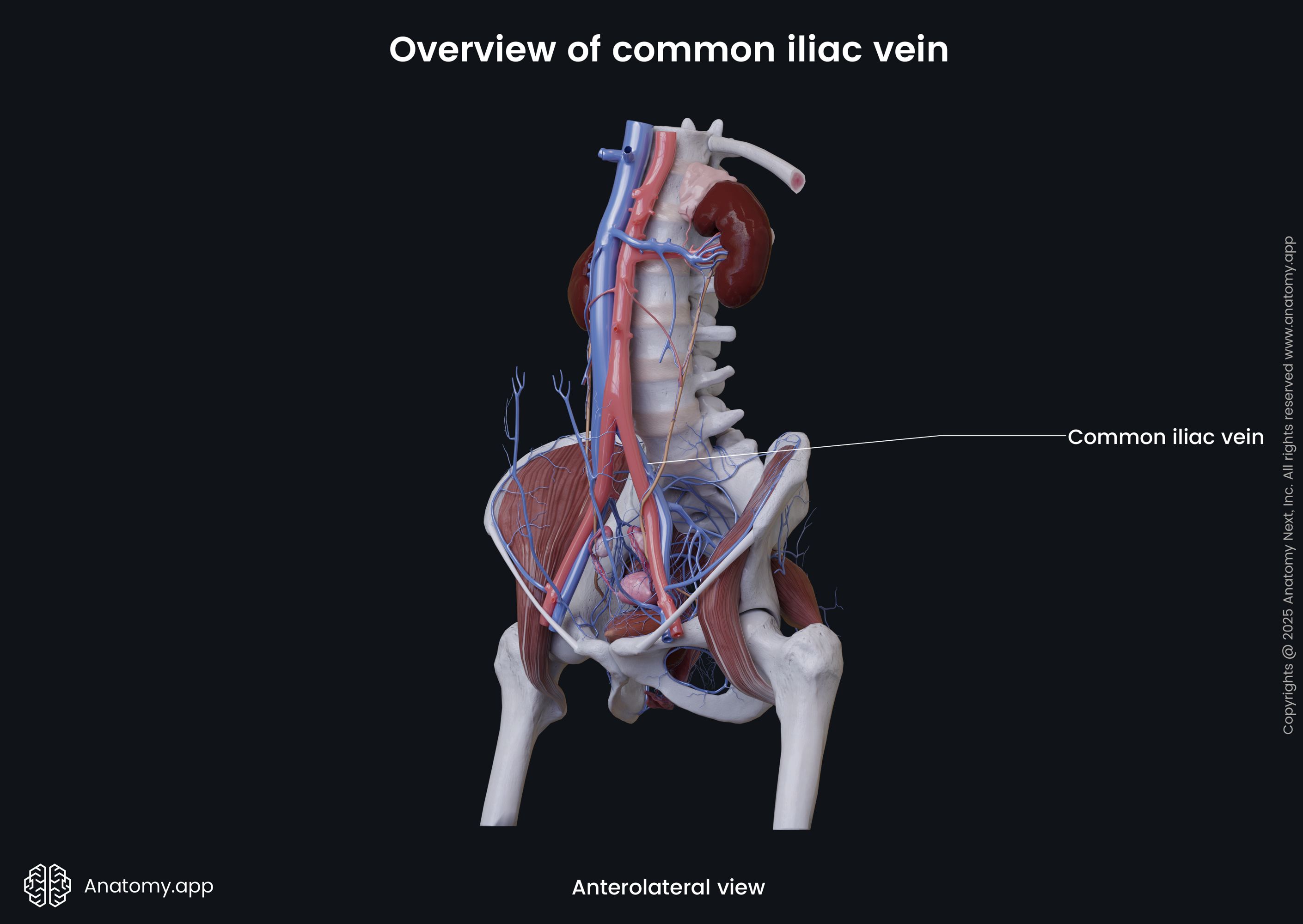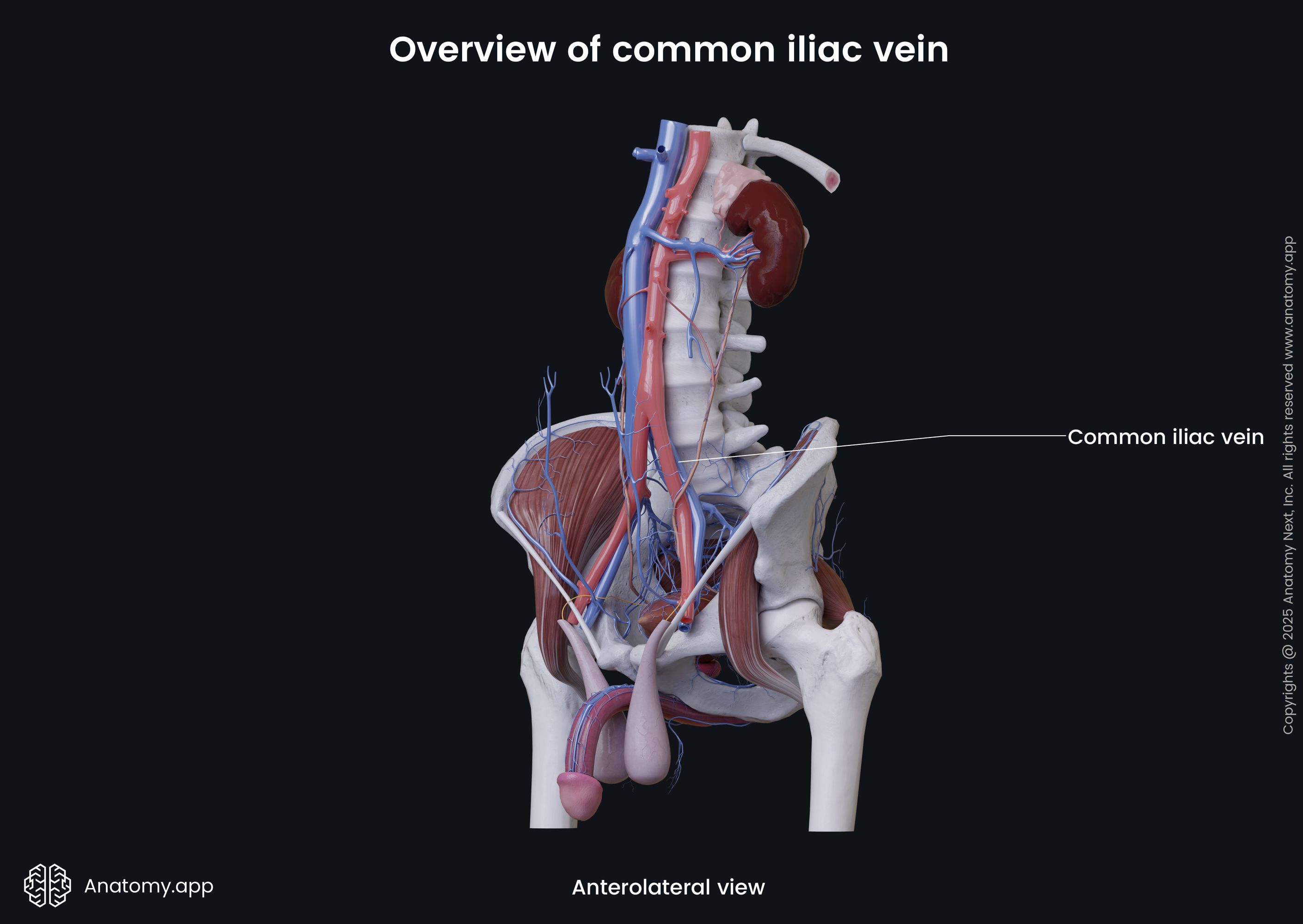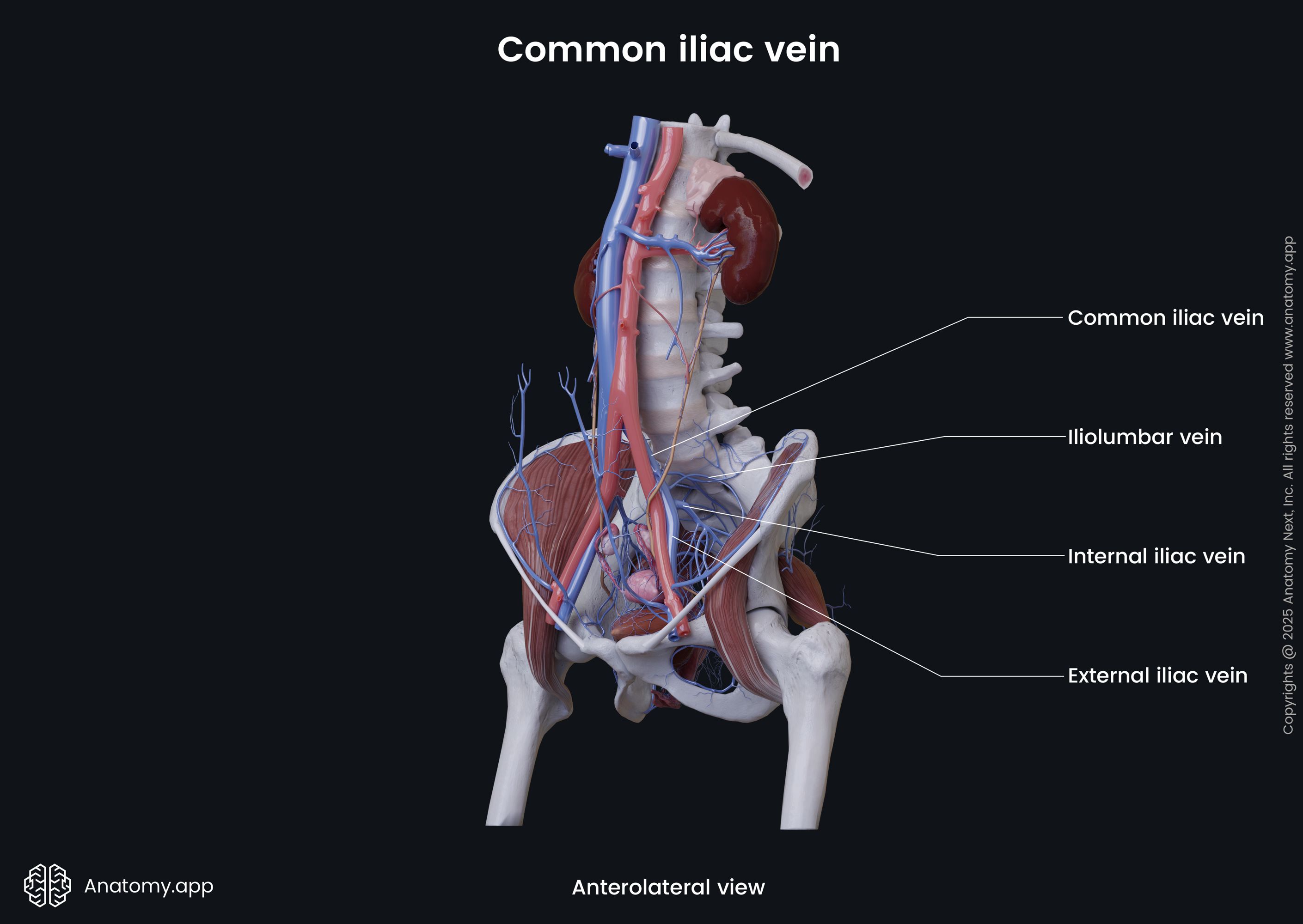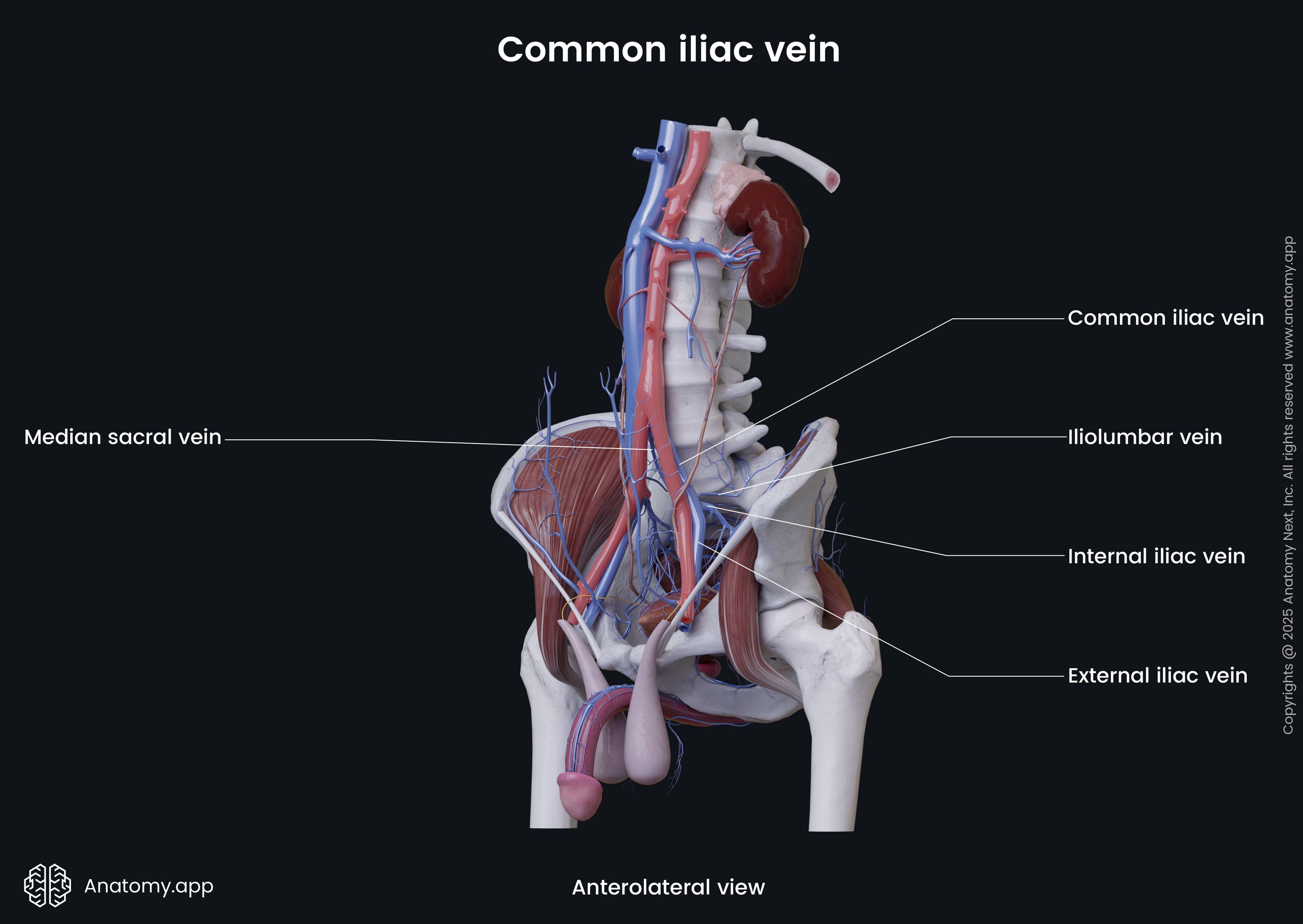- Anatomical terminology
- Skeletal system
- Joints
- Muscles
- Heart
- Blood vessels
- Blood vessels of systemic circulation
- Aorta
- Blood vessels of head and neck
- Blood vessels of upper limb
- Blood vessels of thorax
- Blood vessels of abdomen
- Blood vessels of pelvis and lower limb
- Arteries of pelvis and lower limb
- Veins of pelvis and lower limb
- Blood vessels of systemic circulation
- Lymphatic system
- Nervous system
- Respiratory system
- Digestive system
- Urinary system
- Female reproductive system
- Male reproductive system
- Endocrine glands
- Eye
- Ear
Common iliac vein
The common iliac vein (Latin: vena iliaca communis) is a large paired vein in the pelvis formed by the fusion of the external iliac vein and internal iliac vein. It is responsible for collecting deoxygenated blood from the pelvis and lower limb.


The common iliac vein arises anterior to the sacroiliac joint, where the internal iliac vein joins the external iliac vein. It further passes obliquely upward to the 5th lumbar vertebra, a little to its right. At this point, both common iliac veins come together and form the inferior vena cava. On its course, the common iliac vein collects the iliolumbar and, sometimes, the lateral sacral veins.

